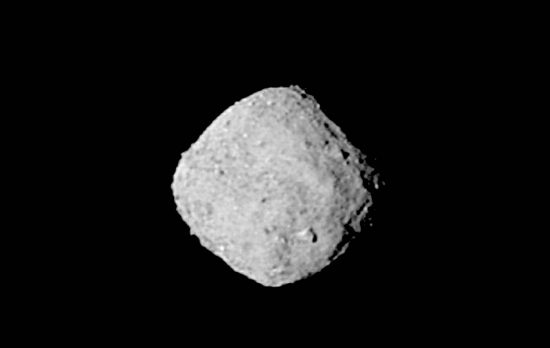
Asteroid Bennu from 330 kilometers. Credit: NASA/Goddard/University of Arizona.
Nov 21, 2018
Osiris-Rex approaches Asteroid Bennu.
On September 8, 2016 NASA launched Osiris-Rex on a mission to study the asteroid, 101955 Bennu. The mission objectives include collecting a sample from Bennu and returning it to Earth.
Bennu is one of more than 7000 Near Earth Objects (NEO), and, like other NEOs, orbits inside 200,000,000 kilometers from the Sun. According to NASA, when an asteroid was selected in 2008, there were only 192 that had orbits close enough to consider.
Their “ideal asteroid” was larger than 200 meters, so the number of possible targets reduced from 192 to 26. Since asteroids are categorized by chemical composition, only a few are carbonaceous, containing organic molecules. Therefore, of the 26, only 12 are of a “known composition”, with 5 containing abundant carbon.
Astrophysicists are interested in asteroids, because they want to send a manned-mission to a larger one. They are looking at various small bodies in order to determine if electrical activity will be a problem for astronauts. The Osiris-Rex mission, scheduled to arrive in December 2018, will attempt to “grab” samples from Bennu and return them to Earth in March 2021. The sample package should enter Earth’s atmosphere and soft-land on September 24, 2023.
It is ironic that NASA scientists are concerned about electricity on and around asteroids. The Electric Universe view of the Solar System includes intensely energetic events and violent interactions between charged planets and moons. Plasma discharges excavate surface depressions, scoop out material, and explode it into space, leaving cleanly cut features.
At the outset, however, planetary scientists exclude any electrical explanation – which rectifies the anomalies in other theories – because they know almost nothing about the forces involved, except to parrot: “if there’s electricity in space it doesn’t do anything.” It never occurs to them that electricity can create the very things they now struggle to understand.
Perhaps the Osiris-Rex mission will be able to shed light on those phenomena.
Stephen Smith












